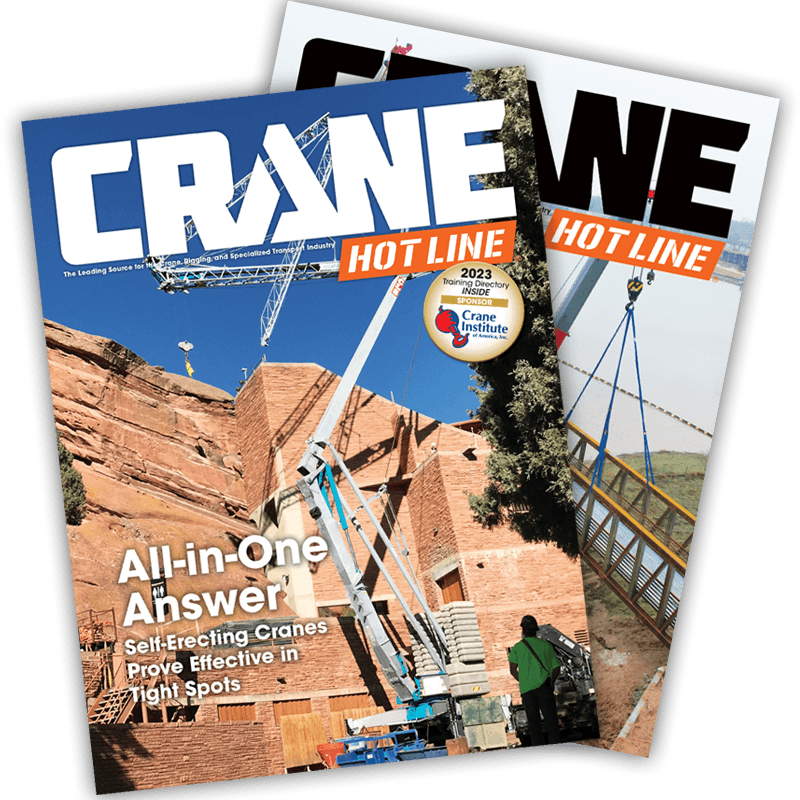More Than a Bucket Truck
Enlarge Image
December 1, 2004

Image 1: Elliott L60 Hi-Reach™
The L60 is first a full-featured aerial lift, second a crane, third an auger platform, and finally, a flexible work truck capable of carrying a variety of support equipment. Pressure washers, welders, and air-compressors can all be used in the platform thanks to hoses and cables linking the platform to the base.
The first L60 was introduced in 1999, and the current version was substantially upgraded in 2002. Significant improvements included redesigning the sub-frame and outrigger weldments. The turret design was made easier to inspect and service. There was also a campaign to reduce the number of hydraulic fitting and streamline the electrical system. This resulted in a 40% decrease in the total number for fittings.

It's easy to appreciate the robustness of this product; it exudes quality in its design, construction, and Du Pont Emron paint finish. As a work platform, the L60 offers an impressive 62 feet of platform height and a full 56 feet of horizontal reach. The platform itself measures 30"x54" with 40-inch high guard rails and dual safety lanyard attachment rings. Elliott even throws in two of the required safety harnesses for free. Platform capacity is an unrestricted 500 pounds.
For rigidity and durability, the frame is a one-piece, welded, box-type fabrication with integral outrigger mounts. The one-piece turret is designed as a reverse offset with 360° continuous rotation. The boom is a simple rectangular tube design with 1/4-inch steel walls. The standard unit on a 16-foot bed weighs about 13,500 pounds, less the truck.
Enlarge Image
The unit I test drove was a sweet running International equipped with a DT466 diesel. Whatever your truck preference, you'll need a chassis along these lines: 120 inches cab to axle, 900,000 in.-lb. per rail, 8,500-pound front axle, with a 26,000-pound GVW.

Image 2: Dual deck access is located at the rear near the individual outrigger control stations.
The standard bed is 16 feet long (other lengths available) and 98 inches wide with 3/16" steel tread plate floor, a 6-inch rub rail, and heavy duty cross members. To facilitate deck access, dual grab handles are provided at the rear corners, just above the dual outrigger controls.

From the top
The 30"x54" EZR platform (which stands for Easy to Rotate, Remove, and Reattach) features 90° hydraulic rotation. I can attest that the platform's name was representative of its abilities.
Image 3: The dual platform leveling cylinders are a bit of an overkill.
At the platform entry there is no top rail and fixed mid-rail, which doesn't pose a problem for long-legged operators. The detachment design is so simple and the controls so smooth and precise that it took me less than 120 seconds to accomplish the detachment and re-attachment. Rubber bumpers bolted to the bottom support the platform when it's removed. The platform leveling system utilizes a closed hydraulic system consisting of twin platform cylinders interacting with a boom-actuated master cylinder. One indication of Elliott's robust design philosophy can be seen in Image 3. Where one leveling cylinder would do the job just fine, the company has chosen to use dual platform leveling slave cylinders. To keep things properly balanced the system incorporates factory-set relief valves to compensate for oil expansion or overload during platform leveling operation. There are manual controls available at both the upper and lower control boxes.

Enlarge Image
 |
|
Enlarge Image |
 |
Crane highlights
Since the L60 is commonly used for sign and lighting installation and maintenance applications, the maximum crane capacity has been pegged at 5,900 pounds. This eliminates the requirement for an LMI.. The heavy-duty hydraulic winch is mounted at the base of the boom for a long fleet angle and flat level spooling of the cable. The winch comes supplied with 180 feet of 3/8" diameter 6x37 IPSI wire rope and swivel hook. An anti-two-block switch, two-part hook, horn, and certification for ANSI B30.5 mobile cranes are also provided.

Hydraulic and electrical systems
All high pressure hoses are wire braid reinforced with a minimum safety factor of 4:1. The parallel open center system provides an operating pressure of about 2,500 PSI. The system is equipped with liquid-filled pressure gauges. A 5 micron high pressure return line filter is located out in the open. The 35 gallon steel oil tank is mounted to the frame on the roadside. A direct-mounted PTO drives a heavy duty
The electrical circuit is child's play. There are no microprocessors, just relays and valves and strategically placed bulkheads for wiring. The bulkheads (notice the two black boxes in Image 5), located externally for easy access, help isolate any electrical issues. Upon visual inspection I found all the hand-wired connections to be clearly laid out and both color and number coded.

Enlarge Image
Safety speaking

Image 5: Well-positioned steps and handles are a simple, yet telling, example of how much thought Elliott Equipment Co., has put into safety features.
In case of engine failure, an auxiliary 12-volt emergency pump can be activated at both the upper and lower controls. Holding valves are employed to prevent the boom from falling in event of hose failure. Also part of the standard equipment package are a backup alarm; U/L approved 5:BC dry chemical fire extinguisher, installed in the cab; and two body harnesses and lanyards.

Operational impressions
The L60s literature claims, “Our extension cylinder arrangement gives you the smoothest most precise ride in the industry.” I don't know how much the cylinder design has to do with it, but I can tell you the joysticks supplied by OEM Controls and Parker Hannifin hydraulic valves produced one of the smoothest boom operations I have ever experienced—on any piece of lifting equipment! My only gripe is that the control box is mounted too low. Even an average height individual might have a stiff back at the end of the day from bending over to use them.
Of course the key to productivity is the ability to be able to set up quickly. Individual outrigger control valves are mounted at the rear, under each corner of the bed and allow an excellent vantage point. . One controls road-side outriggers and the other controls curb-side outriggers. The rear outriggers are an "MH" out-and-down style design with an 18-foot spread. "A" type secondary outriggers with 12'6” spread are located rear of the cab. These are configured to allow one sided deployment.
Enlarge Image
Versatility has been the key to the L60s success. One aspect of this is the number of tools and accessories that can be utilized in the platform. This is accomplished with a large and accommodating externally mounted cable link (power track) system. This 8-inch side steel track supplies and facilitates the use of a variety of work tools. An open track is standard, but it can be ordered with a cover. Elliott has also designed a simple flange that captures and secures the track whenever it is in the stowed position. The flange helps reduce stress associated with over-the-road travel.

Image 6: A wide cable carrier can support links to a variety of platform tools.
Enlarge Image
Working at any height requires a certain level of confidence in the piece of equipment you are using. The L60 just exudes quality. While positioning the boom, the smooth controls combined with the unit's rock solid stability translates to total operator comfort. And confident, comfortable operators are more productive.

Image 7: I found the L60 to be rock solid even in a 25 mph

Likes
· The L60 boasts an overall high-quality design and fabrication.
· It features one of the smoothest boom operations I have ever experienced on any piece of lifting equipment.
· The massive bed decks provide work space galore.
Dislikes
· The upper control box is mounted too low for comfortable operation.
· The fixed mid-rail makes platform entry awkward.
Verdict
· In the L60, Elliott Equipment has achieved a top quality, highly versatile truck-mounted aerial lift.


